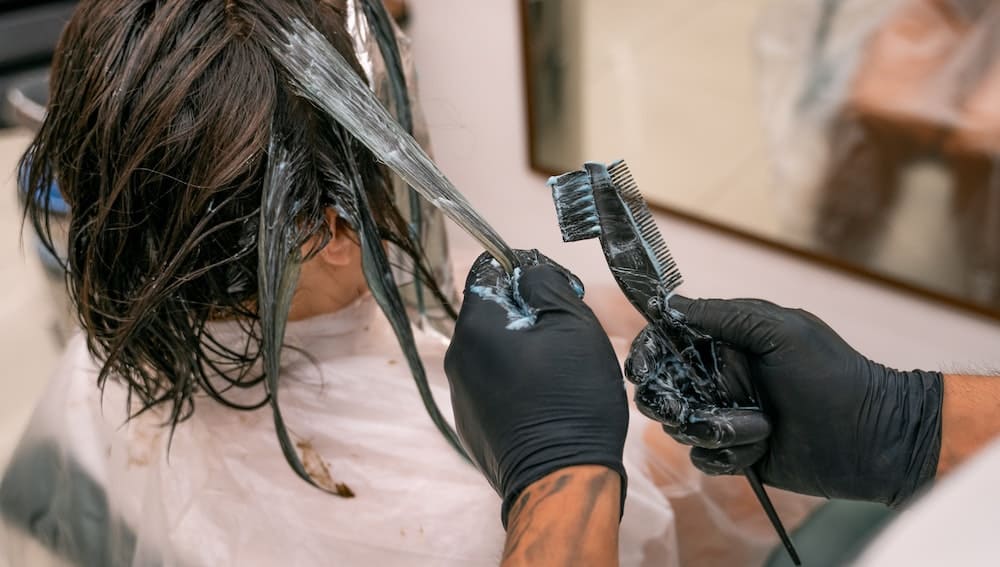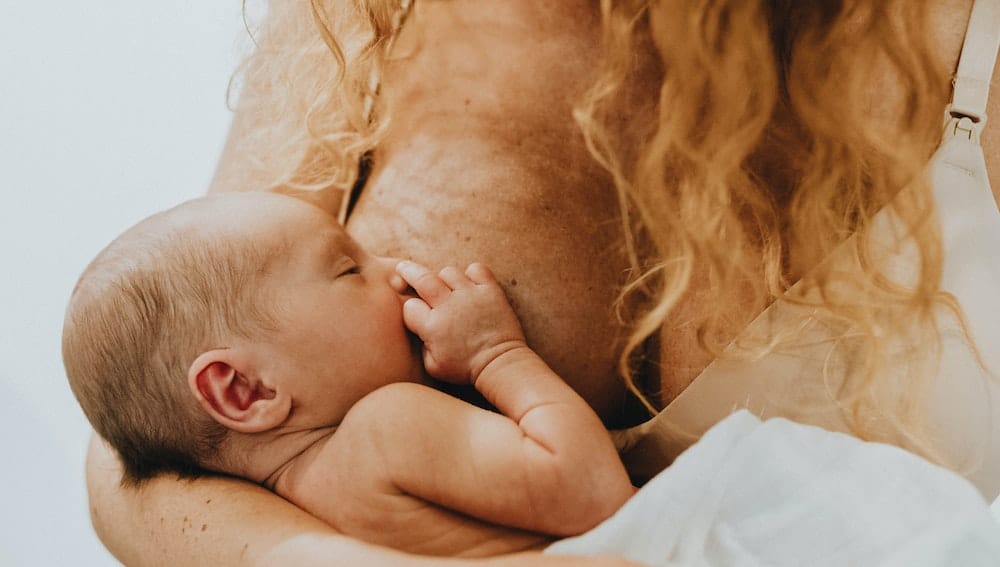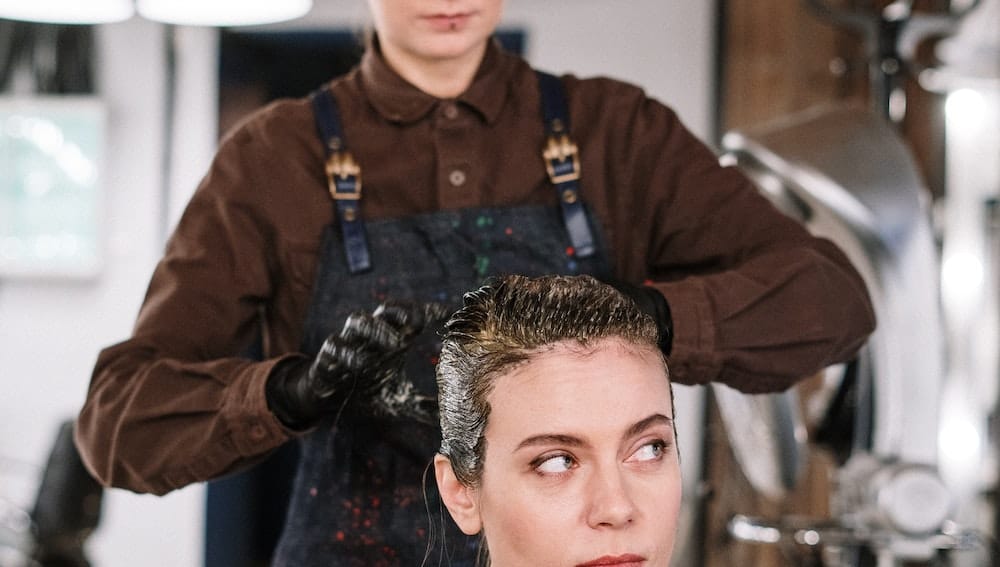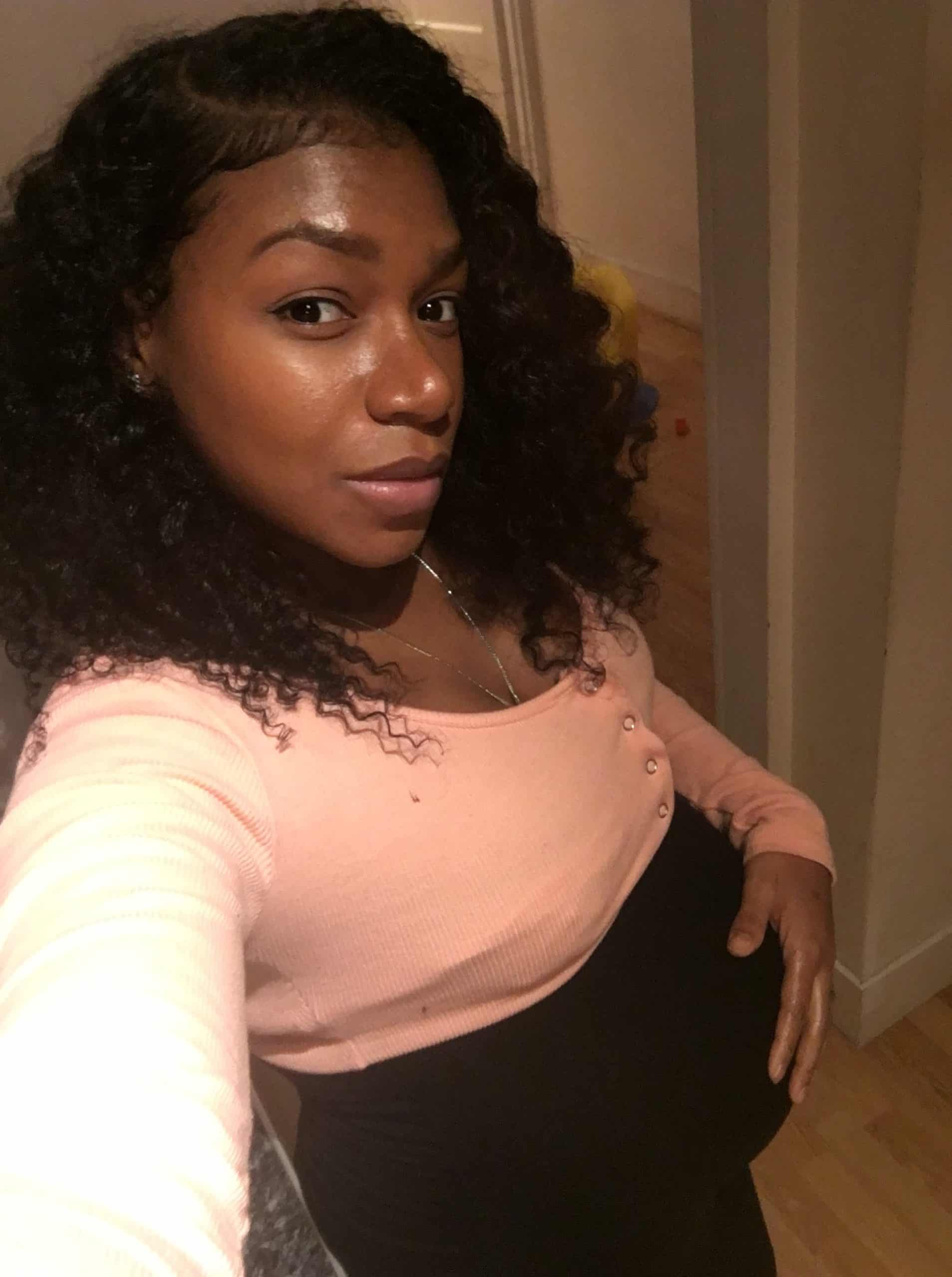Hair bleaching is a popular hair color trend that involves removing the natural pigment from the hair to achieve a lighter shade. While it is a common practice among many women, it is important to understand the potential risks and implications of hair bleaching, especially for nursing mothers.
The question of whether or not it is safe to bleach hair while breastfeeding has been a topic of discussion among many women.
It is important to note that hair bleaching involves the use of chemicals that may be harmful to both the mother and the baby.
While there is limited research on the effects of hair bleaching during breastfeeding, it is recommended that nursing mothers exercise caution and consult with their healthcare providers before engaging in any hair bleaching practices.
In this article, we will explore the basics of hair bleaching, the relationship between hair bleaching and pregnancy, the potential risks of hair bleaching during breastfeeding, safe hair bleaching practices for nursing mothers, and alternatives to traditional hair bleaching.
Key Takeaways
- Hair bleaching involves the use of chemicals that may be harmful to nursing mothers and their babies.
- Nursing mothers should exercise caution and consult with their healthcare providers before engaging in any hair bleaching practices.
- There are safe alternatives to traditional hair bleaching that nursing mothers can explore.
Understanding the Basics of Hair Bleaching

Bleaching hair is a popular way to lighten hair color or prepare it for a new color. However, bleaching hair while breastfeeding requires some extra precautions. Understanding the basics of hair bleaching is important to minimize any potential risks.
Bleaching involves the use of chemicals that can strip the hair of its natural color. The process works by breaking down the melanin in the hair, which is responsible for its color. The bleaching process can be done on the entire head or specific areas of the hair, such as highlights or ombre.
There are different types of hair bleaching products available, including on-scalp bleach lighteners, foils, and powdered bleach. On-scalp bleach lighteners are applied directly to the scalp and are the most potent type of bleach.
Foils are used to apply bleach to specific areas of the hair, while powdered bleach is mixed with a developer to create a paste that is applied to the hair.
Bleaching hair can be damaging to the hair, leading to dryness, breakage, and hair loss. It is important to use hair treatments and products that can help repair and strengthen the hair after bleaching. Bleaching can also cause scalp irritation and burns if not done properly.
When bleaching hair while breastfeeding, it is important to avoid using any chemicals that can be harmful to the baby. Some chemicals in hair dye and hair products can be absorbed into the bloodstream and passed on to the baby through breast milk.
It is recommended to wait until after breastfeeding to bleach hair, or to consult with a healthcare professional before doing so.
Overall, understanding the basics of hair bleaching is important to ensure a safe and successful bleaching process. It is important to use caution when using chemicals on the hair, especially while breastfeeding.
The Relationship Between Hair Bleaching and Pregnancy
Hair bleaching is a popular cosmetic procedure that involves the use of chemicals to lighten the color of hair. However, for women who are pregnant or breastfeeding, the safety of hair bleaching is a concern.
During pregnancy, the body undergoes several changes, including hormonal changes that can affect the health of both the mother and the baby. As a result, many women are cautious about the products they use during this period.
Hair bleaching involves the use of chemicals such as hydrogen peroxide and ammonia, which can be harmful if inhaled or absorbed through the skin.
While there is limited research on the effects of hair bleaching on pregnancy, it is generally recommended that pregnant women avoid using hair dyes or bleaches during the first trimester when the baby’s organs are developing.
For women who have recently given birth, hair bleaching may also be a concern. The chemicals used in hair bleaching can be absorbed through the skin and enter the bloodstream, which can potentially harm the baby if they are breastfeeding.
In summary, the safety of hair bleaching during pregnancy and breastfeeding is still a topic of debate. While there is limited research on the subject, it is generally recommended that pregnant and breastfeeding women avoid using hair dyes or bleaches.
It is always best to consult with a healthcare professional before using any cosmetic products during pregnancy or while breastfeeding.
Can You Bleach Your Hair While Breastfeeding?

Many new moms may wonder if it’s safe to bleach their hair while breastfeeding. The answer is not straightforward and depends on several factors.
Firstly, it’s essential to understand that chemicals in hair dye can be absorbed through the scalp and enter the bloodstream. While there is no conclusive evidence to suggest that hair dye is harmful to nursing mothers or their babies, it’s always better to err on the side of caution.
Secondly, nursing mothers should avoid using hair dyes that contain harsh chemicals like ammonia, peroxide, and paraphenylenediamine (PPD). These chemicals can be toxic and may cause an allergic reaction in some people.
It’s also essential to consider the age and health of the nursing baby. Newborns and premature babies are more vulnerable to the harmful effects of chemicals, and nursing mothers should avoid using hair dyes until their baby is at least three months old.
If a nursing mother decides to bleach her hair, she should take extra precautions to minimize the risk of exposure to the chemicals. These include:
- Using a hair dye that’s free of harsh chemicals like ammonia and PPD.
- Avoiding contact with the scalp as much as possible.
- Ventilating the room adequately to minimize exposure to fumes.
- Wearing gloves and protective clothing to avoid skin contact.
- Washing the hair thoroughly after dyeing it to remove any residual chemicals.
In conclusion, while there is no conclusive evidence to suggest that bleaching hair while breastfeeding is harmful, nursing mothers should take extra precautions to minimize the risk of exposure to chemicals.
It’s always advisable to consult with a healthcare professional before using hair dye while breastfeeding.
Potential Risks of Hair Bleaching During Breastfeeding
Bleaching hair is a common practice among women who want to change their hair color. However, it is important to note that hair bleaching involves the use of chemicals that can be harmful to both the mother and the baby.
Chemicals such as ammonia and peroxide are commonly used in hair bleaching products. These chemicals can be absorbed through the scalp and enter the bloodstream, which can be dangerous for both the mother and the baby.
Ingesting these chemicals can also be harmful and may cause allergies or infections. It is important to note that toxic chemicals can be passed on to the baby through breast milk, which can harm the baby’s health.
If a mother decides to bleach her hair while breastfeeding, it is recommended that she consults with her doctor first. The doctor can advise on the best course of action and recommend safe products to use.
In conclusion, hair bleaching while breastfeeding can be dangerous and should be approached with caution. It is important to consider the potential risks involved and take necessary precautions to ensure the safety of both the mother and the baby.
Safe Hair Bleaching Practices for Nursing Mothers

Bleaching hair is a popular hair coloring technique that can give a person a fresh, new look. However, nursing mothers need to be careful when bleaching their hair. Bleaching agents contain chemicals that can be harmful to the baby.
To ensure safety, nursing mothers need to follow safe hair bleaching practices. Here are some tips that can help:
- Choose a safe bleaching agent: Nursing mothers should use a bleach that is safe for breastfeeding. They should avoid using harsh chemicals that can be absorbed by the skin and may harm the baby. It is best to consult a doctor or a hair stylist to choose a safe bleaching agent.
- Use highlights instead of full bleaching: Instead of completely bleaching the hair, nursing mothers can opt for highlights. Highlights require less bleach and are less likely to be absorbed by the scalp.
- Take safety precautions: When bleaching hair, nursing mothers should take safety precautions to avoid inhaling fumes. They should work in a well-ventilated room and wear gloves to avoid skin contact with the bleach.
- Seek professional help: It is best for nursing mothers to seek help from a professional stylist. A stylist can use safe products and take the necessary precautions to keep the baby safe.
- Be mindful of the smell: The smell of bleach can be overwhelming and may cause nausea. Nursing mothers should be mindful of the smell and avoid inhaling too much of it. They can use a mask to cover their nose and mouth.
In conclusion, nursing mothers can bleach their hair safely by following these practices. It is important to be cautious and take the necessary precautions to avoid harm to the baby.
Alternatives to Traditional Hair Bleaching
For breastfeeding mothers who want to change their hair color, there are alternatives to traditional hair bleaching that are safer and more suitable for their situation. Here are some options to consider:
Semi-Permanent and Vegetable Dyes
Semi-permanent and vegetable dyes are non-toxic and do not contain ammonia or peroxide, making them a safer option for breastfeeding mothers.
These dyes fade over time and do not penetrate the hair shaft as deeply as permanent dyes, so they are less damaging to hair. However, they may not provide the same level of lightening as traditional bleach.
Henna
Henna is a natural alternative to traditional hair dye that has been used for centuries. It is made from the leaves of the henna plant and can provide a range of colors from red to brown. Henna does not contain harsh chemicals and is safe for breastfeeding mothers.
However, it can be difficult to remove and may not provide the same level of lightening as traditional bleach.
Temporary Hair Color
Temporary hair color is a good option for those who want to experiment with different colors without committing to a permanent change. These products come in a variety of forms, including sprays, gels, and shampoos.
They are easy to apply and can be washed out with regular shampoo. However, they may not provide the same level of lightening as traditional bleach.
Balayage
Balayage is a hair coloring technique that involves painting color onto the hair in a natural, sun-kissed pattern. This technique can create a lighter look without the need for traditional bleach. Balayage is a low-maintenance option that requires minimal touch-ups, making it a good choice for busy moms.
Non-Toxic Hair Color
There are many non-toxic hair color options available that are safe for breastfeeding mothers. These products do not contain harsh chemicals and are made with natural ingredients. They come in a variety of colors and can provide long-lasting results without the need for traditional bleach.
Overall, there are many alternatives to traditional hair bleaching that are safe and suitable for breastfeeding mothers. By choosing a non-toxic or semi-permanent hair dye, moms can achieve the look they want without compromising their health or their baby’s health.
Postpartum Hair Care and Self-Care Routines
After giving birth, many new moms experience postpartum hair loss, which can be distressing and affect one’s self-esteem. It’s important to remember that this is a natural process and that the hair will eventually grow back.
However, there are some things that can be done to promote healthy hair growth and take care of the hair during this time.
One of the first things to consider is the use of hair products. It’s important to use products that are gentle and free of harsh chemicals, as these can further damage the hair.
Look for products that are specifically designed for postpartum hair loss or that contain ingredients such as biotin, keratin, and collagen, which can help to strengthen and nourish the hair.
In addition to using the right products, it’s also important to take care of the hair by avoiding excessive heat styling and harsh brushing.
Instead, opt for gentle hair care practices such as air-drying the hair and using a wide-tooth comb to detangle. This can help to prevent further damage to the hair and promote healthy growth.
Self-care routines are also important during this time, as they can help to reduce stress and promote overall well-being.
This can include things like taking a relaxing bath, getting a massage, or practicing yoga or meditation. Taking care of oneself can help to reduce stress and promote healthy hair growth.
Finally, it’s important to seek professional help if needed. A salon stylist or a dermatologist can provide guidance and advice on how to care for postpartum hair loss and promote healthy hair growth.
Additionally, doing research on the topic can also be helpful in understanding the process and finding ways to take care of the hair during this time.
Also read: Can You Take Emergen C While Breastfeeding
Consulting with Healthcare Providers
It is important for individuals who are breastfeeding to consult with their healthcare provider before bleaching their hair. A healthcare provider can provide guidance on the safety of bleaching hair while breastfeeding and help individuals make an informed decision.
When consulting with a healthcare provider, individuals should provide information about the hair bleach they plan to use, including the ingredients and any potential risks associated with the product.
The healthcare provider can then assess the safety of the product and provide recommendations based on the individual’s specific situation.
In addition to discussing the safety of hair bleach while breastfeeding, healthcare providers can also provide guidance on how to minimize any potential risks. This may include recommendations on how to properly apply the bleach and how to minimize exposure to the bleach fumes.
It is important for individuals to be open and honest with their healthcare provider about their plans to bleach their hair while breastfeeding. By working together, individuals and healthcare providers can make an informed decision that prioritizes the health and safety of both the mother and the baby.
Additional Considerations
When it comes to bleaching hair while breastfeeding, there are a few additional considerations that should be kept in mind. While it is generally safe to bleach hair while nursing, there are certain factors that can increase the risk of harm to both the mother and the baby.
Caution with Permanent Hair Dye
One of the most important considerations is to avoid using permanent hair dye while breastfeeding. Permanent hair dye contains chemicals such as ammonia, formaldehyde, and parabens that can be harmful to both the mother and the baby.
Instead, opt for semi-permanent or temporary hair dye that does not contain these harmful chemicals.
Quality of Bleach and Other Hair Products
It is also important to consider the quality of the bleach and other hair products being used. Cheap bleach and hair products can contain harmful chemicals and additives that can be harmful to both the mother and the baby. Look for high-quality, organic hair products that do not contain harmful chemicals.
Texture and Relaxers
Texture and relaxers can also be harmful to both the mother and the baby. These products contain chemicals that can be absorbed into the bloodstream and passed on to the baby through breast milk. Avoid using these products while breastfeeding.
Oils and Keratin
Using oils and keratin can also be harmful to both the mother and the baby. These products can contain chemicals that can be absorbed into the bloodstream and passed on to the baby through breast milk. Avoid using these products while breastfeeding.
Sage and Retinol
Sage and retinol are also known to be harmful to both the mother and the baby. These products can cause harm to the baby’s nervous system and should be avoided while breastfeeding.
Touch-Ups and Root Touch-Ups
When doing touch-ups and root touch-ups, it is important to avoid getting bleach or other hair products on the scalp. These products can be absorbed into the bloodstream and passed on to the baby through breast milk.
Caffeine Intake and Smoking
Caffeine intake and smoking can also affect the baby’s health. It is important to limit caffeine intake and avoid smoking while breastfeeding.
Advil and Botox
Advil and botox are also known to be harmful to both the mother and the baby. These products can cause harm to the baby’s nervous system and should be avoided while breastfeeding.
Sulfates and Alcohol
Sulfates and alcohol can also be harmful to both the mother and the baby. These products can cause irritation and dryness to the scalp and should be avoided while breastfeeding.
In conclusion, while it is generally safe to bleach hair while breastfeeding, there are certain additional considerations that should be kept in mind.
It is important to avoid using permanent hair dye, cheap hair products, texture and relaxers, oils and keratin, sage and retinol, and to be cautious with touch-ups and root touch-ups. Limit caffeine intake and avoid smoking, advil, botox, sulfates, and alcohol while breastfeeding.
Frequently Asked Questions
Is it safe to bleach hair while breastfeeding?
There is no definitive answer as to whether it is safe to bleach hair while breastfeeding. Some studies suggest that the chemicals in hair bleach can be absorbed through the skin and enter the bloodstream, which could potentially harm a nursing baby. However, other studies have found no evidence of harm.
What are the risks of bleaching hair while nursing?
The risks of bleaching hair while nursing are not well understood. Some potential risks include exposure to toxic chemicals, skin irritation, and allergic reactions. Additionally, if the bleach is ingested by the baby, it could cause harm.
What is the best hair dye option for breastfeeding mothers?
The best hair dye option for breastfeeding mothers is one that is ammonia-free and contains natural ingredients. These dyes are less likely to cause skin irritation and allergic reactions.
However, it is important to note that even natural dyes can contain small amounts of chemicals that could potentially harm a nursing baby.
Can hair toner be used safely while breastfeeding?
Hair toner is generally considered safe to use while breastfeeding, as it does not contain the same harsh chemicals as hair bleach. However, it is still important to take precautions and avoid getting toner on the skin or in the baby’s mouth.
What are the potential effects of hair bleach on a baby?
The potential effects of hair bleach on a baby are not well understood. Some studies suggest that exposure to bleach could cause developmental problems, while others have found no evidence of harm. It is important to consult with a healthcare provider before bleaching hair while breastfeeding.
What precautions should be taken when dyeing hair while breastfeeding?
When dyeing hair while breastfeeding, it is important to take the following precautions:
- Use a hair dye that is ammonia-free and contains natural ingredients.
- Avoid getting dye on the skin or in the baby’s mouth.
- Wait until the baby is at least three months old before dyeing hair.
- Consult with a healthcare provider before dyeing hair while breastfeeding.
Related Posts:
- Can You Breastfeed While the Baby Is Swaddled?
- How To Break Up With The Father Of Your Child?
- Why Do Sons Love Their Mother So Much?

Iesha is a loving mother of 2 beautiful children. She’s an active parent who enjoys indoor and outdoor adventures with her family. Her mission is to share practical and realistic parenting advice to help the parenting community becoming stronger.
